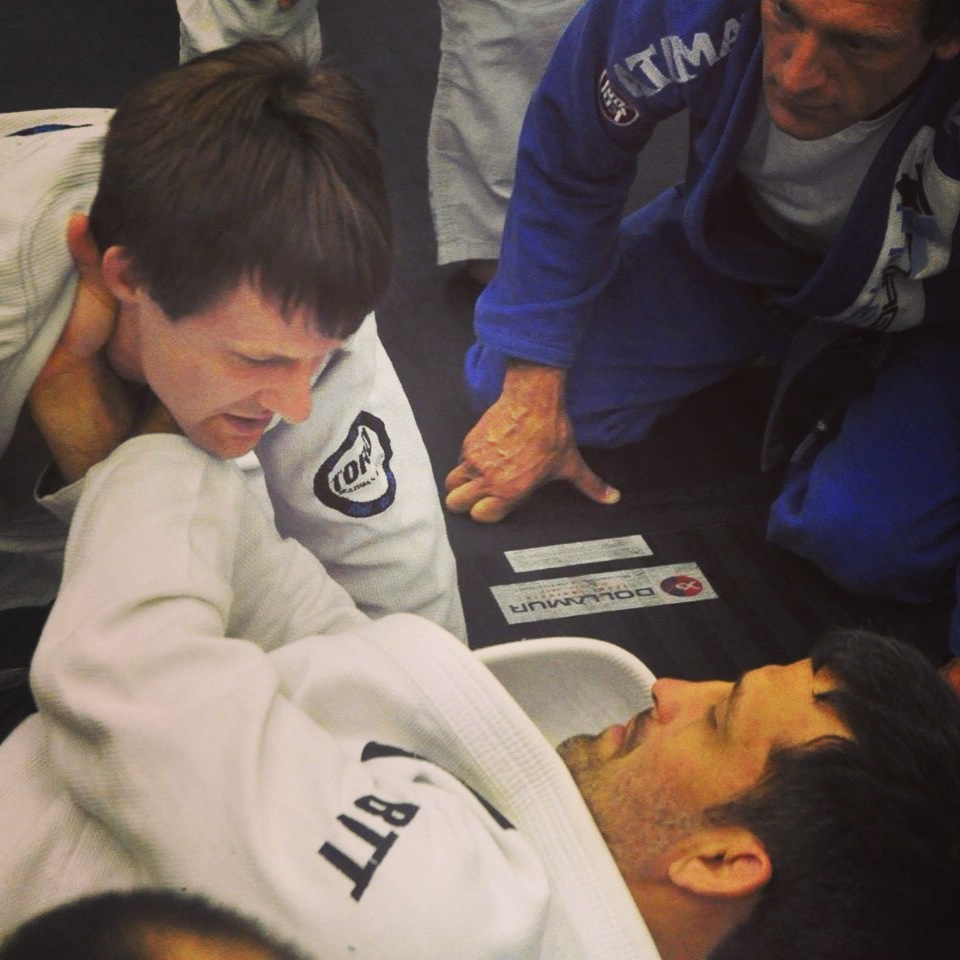The best way to improve at jiu-jitsu is this: just come to class and practice the move the instructor shows. It really is that simple.
At white and blue belt especially, showing up to training and putting in the drill time will get you where you need to be. As you advance in jiu-jitsu, setting aside time outside of class for drilling becomes a solid strategy for improving — one that becomes more and more important over time.
These days, I’m teaching a lot. As an instructor, my first responsibility is always going to be making sure the students are having a good experience, and so I don’t drill during my own classes. When I do get the pleasure of being a student — taking one of David Porter’s BJJ classes, for example — I make sure to maximize this time by paying close attention to the details and using all of the allotted time for drilling.
Time is a premium resource: it’s the one thing you can’t make more of. I’ve put in a lot of thought about the best ways to think about drilling for jiu-jitsu and the best ways to drill chains of BJJ moves. Because we’re at the end of our fundamentals curriculum as I write this post, I just sat down to make my own personal “to drill” list.
I thought I’d share my drilling list as a window into how I think about this — and to hold myself accountable for setting aside 15 minutes before or after class to do it!
When I had more drilling time, I would make even more intricate lists: I would be sure to polish my best moves (the A game), reinforce the moves I’d learned recently (the B game) and try to incorporate some material I didn’t quite grasp yet (the C game). I’d set aside about an hour for this, typically: I would still like to teach a structured drilling class where people get to do drill like this regularly.
Each section of this is a three-minute round of drilling; the sections contain one move I’ve practiced a lot and one or two moves I’m trying to become proficient at. Allowing for one minute of set-up between rounds, this list becomes a BJJ drilling routine I can knock out in 15 minutes before or after class:
STANDING
Collar drag takedown
Kata guruma takedown
GUARD
De La Riva X-sweep
Lapel guard series from Daniel Frank & Keenan Cornelius
GUARD PASSES
Knee cut pass
Backstep to long step or saddle
ESCAPES
Kesa gatame: forward shrimp escape
Reverse kesa gatame: escape to mount or back
Triangle escape: shoulder
You don’t have to be this organized about drilling lists: if you’re a white or blue belt, the best thing you can do is drill the moves you learned in class recently to lock in the details.
Once you have your fundamentals locked down, you’ll notice certain things you’re better at than others. At that point, it can be really useful to identify strengths and weaknesses.
Drilling will help you amplify the strengths and shore up the weaknesses. We should all do more of it.

